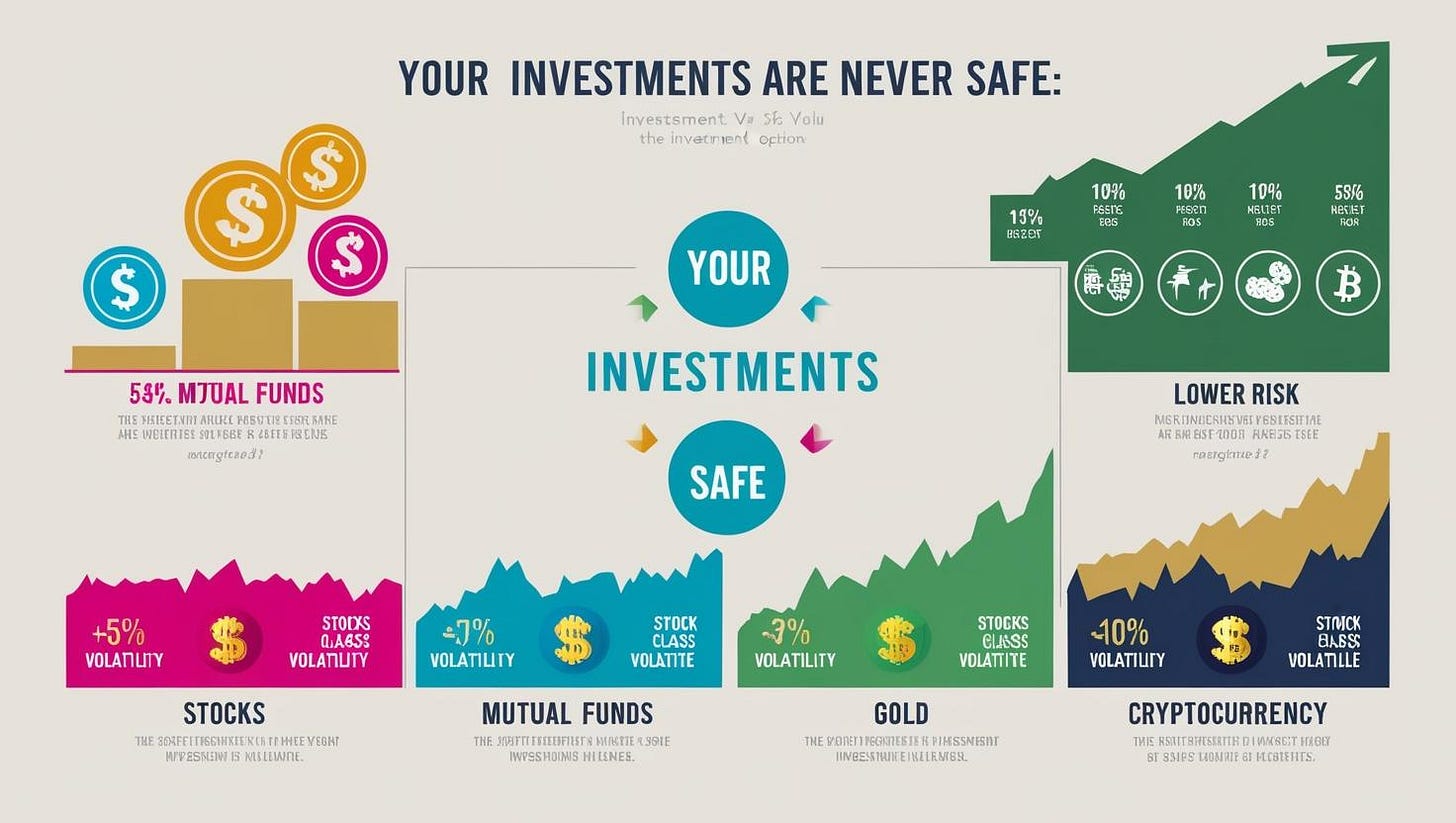Financial markets are a constant tug-of-war between optimism and pessimism—what we commonly know as bull and bear markets. Investors often wonder which asset classes—stocks, mutual funds, gold, crypto, or other liquid assets—perform best in these contrasting environments. Understanding how each behaves during these cycles is crucial for protecting and growing your wealth. Let’s dive into the battle between bulls and bears and explore the strategies that can help you navigate these financial storms.
The Battle of Bulls and Bears
The market cycles between bullish and bearish phases. Bullish markets thrive on economic growth, corporate earnings, and investor confidence, pushing asset prices higher. Bearish markets, on the other hand, are marked by economic downturns, panic-driven selling, and uncertainty. Knowing how different asset classes react in these conditions can mean the difference between financial success and devastating losses.
Stocks: The High-Risk, High-Reward Player
Riding the Bull, Surviving the Bear
In bullish markets, stocks flourish. Economic expansion, strong corporate earnings, and high investor confidence drive prices upward. Growth stocks, especially in the technology and innovation sectors, often lead the rally. The potential for capital appreciation is high, but overvaluation and speculative bubbles are real risks.
However, in bearish markets, stocks bear the brunt of the downturn. Economic slowdowns, weak earnings, and investor panic lead to significant declines. Defensive sectors like utilities and healthcare tend to be more resilient, but the overall risk remains high. The silver lining? Long-term investors can acquire quality stocks at lower prices. Yet, steep short-term losses and prolonged recovery periods remain concerns.
Mutual Funds: The Diversified Contender
Steady in the Storm, Strong in the Sun
Equity mutual funds thrive in bullish markets, following the upward momentum of their underlying stocks. Actively managed funds may even outperform market indices, while passive index funds benefit from broad market growth. Diversification helps reduce individual stock risk, but high management fees in actively managed funds can cut into returns.
In bearish markets, debt mutual funds and hybrid funds—those combining equity and debt—tend to perform better than pure equity funds. While diversification offers some protection, equity-heavy mutual funds are still vulnerable to significant declines.
Gold: The Safe Haven
The Bear’s Best Friend, The Bull’s Forgotten Ally
Gold tends to underperform in bullish markets because investors prefer high-yielding, riskier assets like stocks. Since gold doesn’t generate interest or dividends, its appeal fades when the economy is booming. However, it remains a hedge against inflation and currency devaluation.
During bearish markets, gold shines as investors seek safety. Economic distress, market crashes, and geopolitical uncertainties drive demand for gold, making it a stable store of value. However, it isn’t immune to short-term volatility.
Cryptocurrencies: The Wildcard
The Bull’s Rocket, The Bear’s Freefall
In bullish markets, cryptocurrencies like Bitcoin and Ethereum experience explosive growth. Speculative interest, institutional adoption, and increased investor enthusiasm drive prices to new heights. While they offer unparalleled potential for high returns, extreme volatility and regulatory uncertainties remain significant risks.
However, in bearish markets, crypto assets face severe crashes as investors flee to safer investments. While some long-term believers see crypto as a hedge against traditional finance, it carries a high probability of steep losses due to its lack of intrinsic value.
Other Liquid Assets: Bonds, REITs, and Cash
The Unsung Heroes of Stability and the Quiet Contenders
During bullish markets, bonds tend to underperform compared to stocks but provide steady income. Real Estate Investment Trusts (REITs) benefit from rising property values and rental income, while cash retains value but loses purchasing power due to inflation. These assets offer lower risk and steady returns but lack the rapid growth potential of stocks and crypto.
In bearish markets, government bonds—especially U.S. Treasuries—become preferred safe-haven investments. REITs may suffer, but they tend to remain more stable than equities. Meanwhile, holding cash preserves liquidity, allowing investors to seize buying opportunities during downturns.
Which Asset Holds the Edge?
The Ultimate Showdown: Risk vs. Reward
In bullish markets, stocks and cryptocurrencies generally deliver the highest returns for risk-tolerant investors. Mutual funds offer a balanced approach, while gold and bonds may lag behind.
In bearish markets, gold and bonds emerge as strongholds, ensuring stability and wealth protection. Stocks and cryptos carry the highest risks, while mutual funds provide moderate protection depending on their composition.
Conclusion: The Art of Balancing Risk
Diversification: The Investor’s Best Defense
No single asset class performs well in all market conditions. The key to successful investing lies in diversification—combining high-risk, high-reward assets like stocks and crypto with stable investments like gold and bonds. By understanding how each asset behaves in different market conditions, investors can build a resilient portfolio that weathers financial storms.
Final Thought
"In Bull Markets, You Make Money. In Bear Markets, You Make Fortunes."
Strategic planning, patience, and adaptability define successful investors. Whether markets roar with optimism or fall into despair, the right mix of assets ensures that you remain in control and prepared for any financial climate.
As a disclaimer, this analysis is for educational and informational purposes only and does not constitute any financial advice. Investors should conduct their own due diligence before making any investment decisions. The opinions expressed are personal, potentially biased, and may contain inaccuracies. Additionally, all figures are subject to verification.













